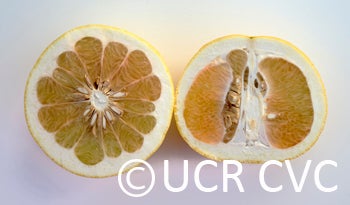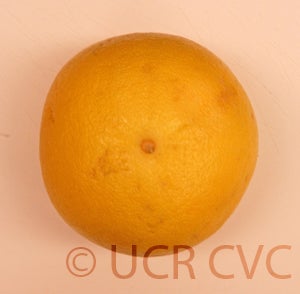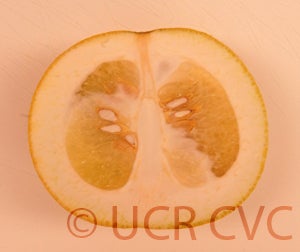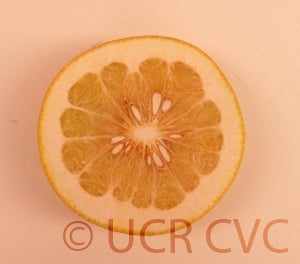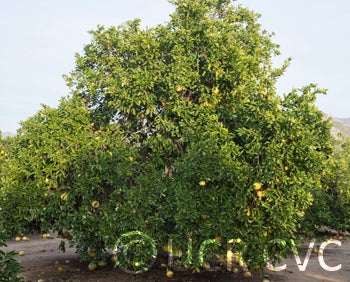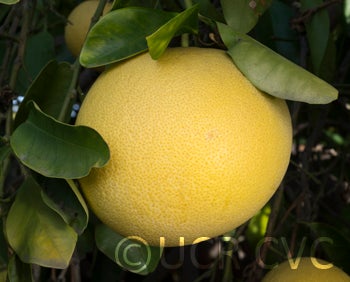Citrus maxima (Burm.) Merr. RUTACEAE
CRC 2355
PI 109683
CPB 10081
Source
Received as a tree from Siam, by O.A. Reinking, on October 15, 1920.
Parentage/origins
Parents unknown.
Rootstocks of accession
Carrizo citrange, C-35 citrange
Season of ripeness at Riverside
Unknown at this time.
Notes and observations
These plants were growing at the United States Plant Introduction Garden, Glenn Dale, MD; originally grown by the Office of Crop Physiology and Breeding Investigations (CPB), a section of the Division of Horticultural Crops and Diseases. Numbered in January 1935 for convenience and distribution. Upon brief observation, this accession fit Groff's description.
Description from George Weidman Groff's "Culture and Varieties of Siamese Pummelos as Related to Introductions into other Countries" (December, 1927):
"Kao Pan (which means "white flat") fruits are subglose, flattened, pistil-end depressed, and are without a neck. The rind is light to lemon yellow, smooth, and 1-2 centimeters thick. They have 12-15 segments, separating with difficulty. Flesh is light yellow. Each juice vesicle can be separated. They have a sweet, very mildly acid flavor, and there is slight to no bitterness."
Description from The Citrus Industry Vol. 1 (1967)
" Fruit medium-large, subglobose to spherical; apex slightly depressed; seedy if open-pollinated, but otherwise not (Soost, 1964). Lemon-yellow (deeper than most) at maturity. Rind medium-thick; faintly pebbled with prominent oil glands; tightly adherent. Segments numerous (12-15); carpellary membranes thick and tough; axis medium-small and solid. Juice sacs large, fleshy, easily separable, and moderately juicy. Flavor sweet and mildly acid. Early in maturity.
Tree medium-small, round-topped and drooping, nearly thornless; leaves medium-large and round-pointed; twigs and new shoots densely pubescent; large, woody flowers.
According to Groff (1927), Kao Pan is one of the most highly reputed varieties of Thailand and almost certainly originated in the Nakorn Chaisri district. Groff considers Nakorn to be a synonym. In California, however, Nakorn more closely resembles Kao Phuang; both clones were received from the U.S. Department of Agriculture in 1930. The reason for this discrepancy doubtless resides in the fact that the original introductions into the United States were budded plants in the case of Kao Pan and Kao Phuang and seeds in the case of Nakorn. "
Availability
Not commercially available in California.
USDA Germplasm Resources Information Network page for Kao Pan pummelo (CRC 2355)
